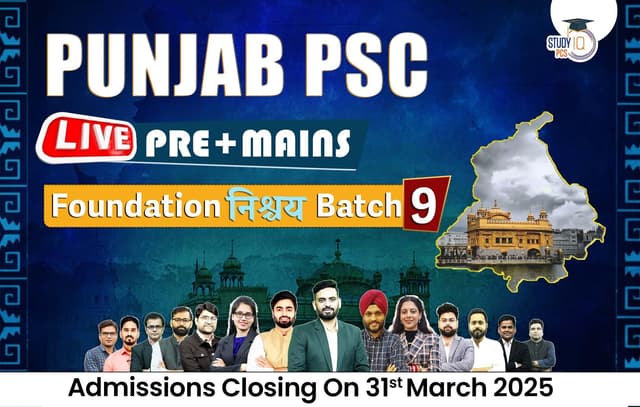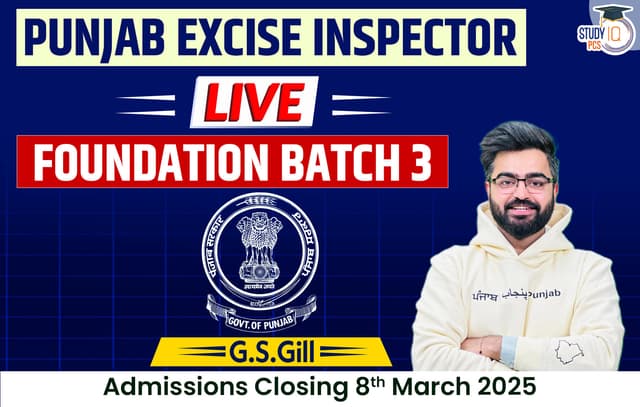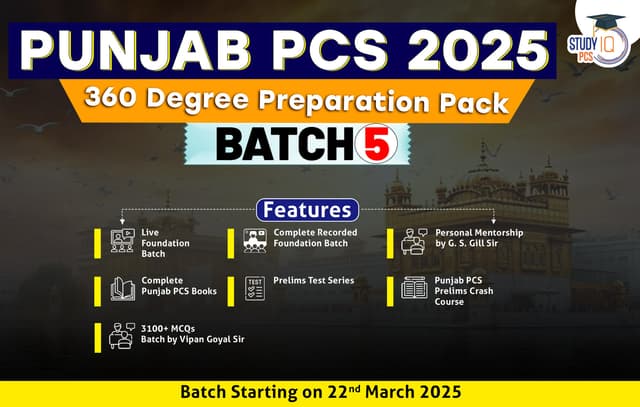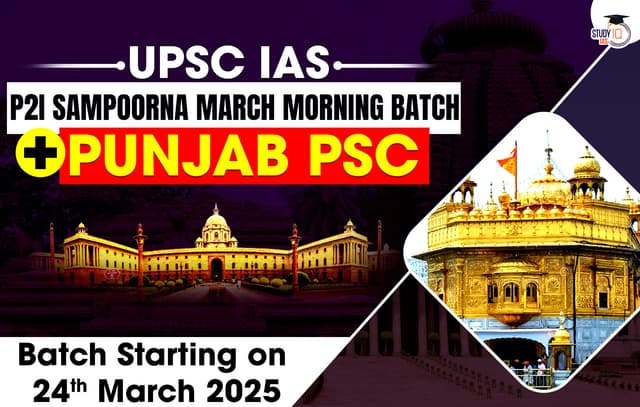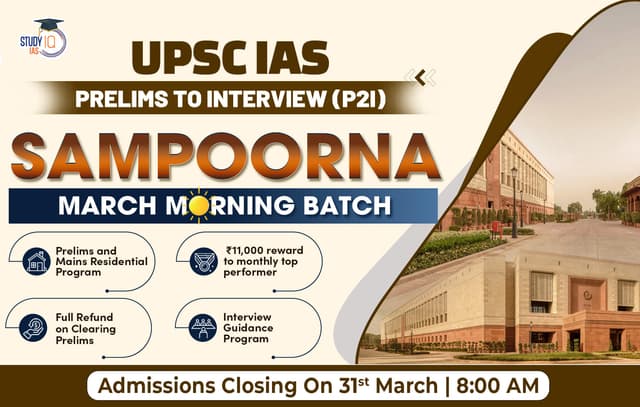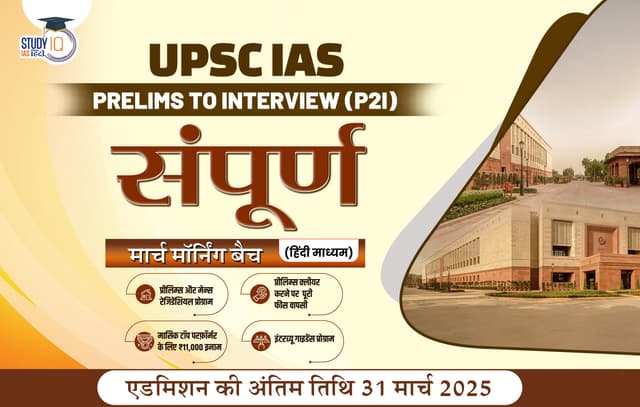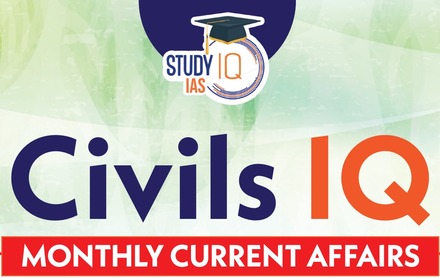Table of Contents
Bhagat Singh (1907-1931)
Bhagat Singh remains one of the most influential revolutionaries in India’s struggle for independence. His intense nationalism and desire for an independent India guided his journey in the freedom movement. Born into a family of patriots, he was introduced to the idea of rebellion and resistance from a young age. Bhagat Singh is remembered for his pivotal role in the revolutionary movement, his socialist ideology, and his courage in fighting against British rule.
Important Details:
- Date of Birth: 28 September 1907
- Date of Death: 23 March 1931
- Political Ideology: Socialism, Nationalism, Anarchism, Communism
- Religious Beliefs: Atheism (later in life)
- Major Associations: Naujawan Bharat Sabha, Hindustan Republican Association, Kirti Kisan Party
- Key Publications: “Why I Am An Atheist”, “The Jail Notebook and Other Writings”, “Ideas of a Nation”
- Death Location: Lahore Jail
Childhood and Early Life
- Birth: September 28, 1907, at Banga, Lyallpur (now in Pakistan).
- Family Background: Bhagat Singh’s family was deeply involved in anti-British activism. His father, Kishan Singh, and uncles were imprisoned for protesting against the British colonial policies, specifically the Colonization Bill of 1906. His family’s connection with the Ghadar Party further influenced his sense of patriotism.
Education
- Bhagat Singh received his early education in his village and later attended Dayanand Anglo Vedic High School in Lahore.
- He pursued his graduation at the National College in Lahore, where he was exposed to radical political ideas and European revolutionary movements.
Early Steps in National Struggle
- Influenced by the Non-Cooperation Movement (NCM) led by Gandhi, Bhagat Singh rejected British education and government-sponsored books, burning them in protest.
- He became involved with nationalist activities and, after the Jallianwala Bagh massacre (1919) and the killing of Akali protesters in 1921, his resolve to fight for India’s independence grew stronger.
National Struggle and Revolutionary Ideas
- Formation of Naujawan Bharat Sabha (NBS): In March 1926, he founded NBS to unite young Indians for the cause of independence. The organization sought to inspire youth to take up arms and resist British rule.
- Hindustan Republican Association (HRA): Bhagat Singh joined HRA and later transformed it into the Hindustan Socialist Republican Association (HSRA), a radical group focused on using armed resistance to oust the British.
- He read extensively on socialism and was inspired by Marxist and Anarchist ideologies, shaping his belief in a democratic, socialist India free from British colonial rule.
Revenge for Lala Lajpat Rai’s Death
- After the death of Lala Lajpat Rai on November 17, 1928, due to a police lathi-charge ordered by James A. Scott, Bhagat Singh and his associates sought revenge.
- On December 17, 1928, they mistakenly killed J.P. Saunders, an assistant superintendent of police, instead of Scott.
1929 Assembly Bombing
- Bhagat Singh and Batukeshwar Dutt threw bombs in the Central Legislative Assembly in Delhi on April 8, 1929, protesting against the Defence of India Act. The bombs were not intended to kill but to make a strong statement.
- They were arrested and used the trial to publicly oppose British rule, shouting slogans like “Inquilab Zindabad” (Long Live the Revolution).
Lahore Conspiracy Case and Hunger Strike
- Bhagat Singh, along with others, was re-arrested in connection with the Lahore Conspiracy Case for the murder of Saunders and bomb manufacturing. During his time in jail, he and his fellow revolutionaries went on a hunger strike to protest the disparity in the treatment of Indian prisoners and British prisoners.
- The death of Jatindra Nath Das, who died after fasting for 63 days, galvanized public support for the revolutionaries.
Trial and Execution
- In 1930, Bhagat Singh was tried and convicted for the murder of J.P. Saunders, along with Sukhdev and Rajguru. Despite the unfair trial procedures, Bhagat Singh remained defiant, advocating for the overthrow of British rule.
- On March 23, 1931, Bhagat Singh, Rajguru, and Sukhdev were executed by hanging in Lahore Central Jail. Their executions sparked nationwide protests and anger against British oppression.
Legacy and Memorial
- Bhagat Singh remains an iconic figure in India’s independence movement, admired for his bravery and vision for a free India.
- His slogan “Inquilab Zindabad” became a symbol of the Indian struggle for independence.
- He is remembered through numerous films, books, and songs, such as “Mohe Rang De Basanti Chola” and “Sarfaroshi Ki Tamanna”.
- His memorial, National Martyrs Memorial, is located at Hussainiwala, near Ferozepur, where his cremation took place.
Sukhdev Thapar (1907-1931)
| Description | Fact |
| Birth | May 15, 1907, Ludhiana |
| Father/Mother | Ram Lal and Ralli Devi |
| Education | National College, Lahore |
| Association | Hindustan Socialist Republican Association (HSRA) |
| Religion/Caste | Hinduism |
| Political Movement | Indian Independence Movement |
| Death | March 23, 1931 |
| Memorial | National Memorial at Hussainiwala (Ferozepur) |
Sukhdev Thapar, a fearless revolutionary, is remembered for his profound contribution to India’s fight for independence. Born on May 15, 1907, in Ludhiana, Punjab, he was deeply influenced by the atrocities committed by the British colonialists. His patriotism led him to join the Hindustan Socialist Republican Association (HSRA), where he actively participated in revolutionary activities against British rule. Along with Bhagat Singh and Shivaram Rajguru, he is most famously remembered for his involvement in the assassination of J.P. Saunders in 1928.
Early Life and Education
- Birth: May 15, 1907, Ludhiana, Punjab
- Parents: Ram Lal and Ralli Devi
- Education: Attended National College, Lahore, where he was influenced by revolutionary ideologies and became a key figure in inspiring youth for the independence movement.
Revolutionary Activities
- Sukhdev, along with Bhagat Singh, was involved in the Naujawan Bharat Sabha, a youth organization that promoted the freedom struggle and combated communalism.
- He took part in the Prison Hunger Strike in 1929, protesting against the mistreatment of political prisoners.
- He was one of the main conspirators in the assassination of J.P. Saunders, which was a retaliatory act for the death of Lala Lajpat Rai due to police brutality.
- After the bombing of the Central Assembly Hall in New Delhi in April 1929, he was arrested, tried, and convicted of the crime.
Death and Legacy
- Sukhdev, along with Bhagat Singh and Rajguru, was sentenced to death. On March 23, 1931, they were hanged in Lahore Jail.
- His body, along with the other revolutionaries, was secretly cremated on the banks of the Sutlej River.
- He was just 24 years old when he sacrificed his life for India’s independence.
- Sukhdev’s memorial is located at the National Martyrs Memorial, Hussainiwala, Ferozepur, alongside Bhagat Singh and Rajguru.
Shivaram Rajguru (1908-1931)
| Description | Fact |
| Birth | August 24, 1908, Khed (Rajgurunagar), Pune, Maharashtra |
| Father/Mother | Hari Narayana and Parvati Bai |
| Education | New English School, Pune |
| Association | Hindustan Socialist Republican Association (HSRA) |
| Religion/Caste | Hindu, Brahmin |
| Political Movement | Indian Independence Movement |
| Death | March 23, 1931 |
| Memorial | National Memorial at Hussainiwala (Ferozepur) |
Shivaram Hari Rajguru, born on August 24, 1908, at Khed (now Rajgurunagar, near Pune, Maharashtra), was a committed revolutionary and a prominent member of the Hindustan Socialist Republican Association (HSRA). He is remembered for his role in the assassination of J.P. Saunders, an act of retaliation for the death of Lala Lajpat Rai.
Rajguru believed that armed resistance, rather than nonviolence, was necessary to free India from British rule. His courageous actions alongside Bhagat Singh and Sukhdev made him one of the most celebrated martyrs of India’s freedom struggle.
Early Life and Education
- Birth: August 24, 1908, Khed (Rajgurunagar), Pune, Maharashtra
- Parents: Hari Narayana and Parvati Bai
- Education: Attended New English School, Pune, where his exposure to revolutionary ideas shaped his future activism.
Revolutionary Activities
- Rajguru joined the HSRA, where he collaborated with Bhagat Singh and Sukhdev in planning the assassination of J.P. Saunders, to avenge Lala Lajpat Rai’s death.
- He was also involved in the bombing of the Central Assembly Hall in New Delhi on April 8, 1929, to protest against British colonial policies.
- After the attacks, Rajguru went into hiding but was eventually arrested while traveling from Nagpur to Pune.
Death and Legacy
- Rajguru was sentenced to death along with Bhagat Singh and Sukhdev for their involvement in the assassination.
- On March 23, 1931, they were hanged in Lahore Jail, and their bodies were secretly cremated on the banks of the Sutlej River.
- Rajguru’s birthplace was renamed Rajgurunagar in his honor. A shopping complex in Hisar, Haryana, was also named Rajguru Market in 1953.
Udham Singh (1899-1940)
Udham Singh is a celebrated Indian revolutionary, best known for avenging the Jallianwala Bagh massacre by assassinating Michael O’Dwyer, the former Lieutenant Governor of Punjab. The massacre, which occurred in 1919, left a profound impact on Udham Singh and fueled his lifelong desire to seek justice for the victims.
| Description | Fact |
| Birth | December 26, 1899, Sunam, Punjab |
| Parents | Tehal Singh Kamboj and Narain Kaur |
| Real Name | Sher Singh |
| Association | Ghadar Party, HSRA |
| Religion/Caste | Kamboj |
| Political Movement | Indian Independence Movement |
| Death | July 31, 1940 |
| Memorial | Sunam Udham Singh Wala, inaugurated July 2021 |
Early Life
- Birth: December 26, 1899, Sunam, District Sangrur, Punjab
- Parents: Tehal Singh Kamboj and Narain Kaur
- Real Name: Sher Singh
- Orphaned at a young age, he and his elder brother, Mukta Singh, were admitted to the Central Khalsa Orphanage in Amritsar in 1907. There, Sher Singh was given the name Udham Singh.
Jallianwala Bagh Massacre
- On April 13, 1919, Udham Singh was present at Jallianwala Bagh in Amritsar, where General Reginald Dyer ordered the massacre of thousands of unarmed Indians. Udham Singh was deeply scarred by the brutality of the incident, which killed hundreds of innocent people. This event left him filled with hatred for the British and a desire for revenge.
Revolutionary Activities
- After the massacre, Udham Singh traveled to various countries including East Africa and the USA, where he became involved with the Ghadar Party and met other Indian revolutionaries.
- In 1927, Udham Singh returned to India and published a newspaper, Ghadar-di-Gunj, to continue the freedom struggle. He was imprisoned for possessing illegal arms and was released after serving four years in jail.
- Determined to avenge the massacre, he traveled to England in 1934 under the alias Mohammad Singh Azad.
Assassination of Michael O’Dwyer
- On March 13, 1940, Udham Singh assassinated Michael O’Dwyer, the man responsible for the Jallianwala Bagh massacre, in a meeting at Caxton Hall, London. He also wounded Lord Zetland, the Secretary of State for India.
- After the assassination, Udham Singh did not attempt to escape and was arrested calmly, ensuring that the world would notice his act of vengeance.
Trial and Execution
- Udham Singh was tried and convicted for murder in April 1940. Despite going on a 42-day hunger strike in prison, he was sentenced to death.
- On July 31, 1940, he was hanged at Pentonville Prison in London, and his body was buried within the prison grounds.
Repatriation of Remains
- In 1974, over three decades after his execution, Udham Singh’s remains were returned to India. His ashes were immersed in the River Sutlej at Sunam.
- A memorial was constructed in his honor at the Sunam-Bathinda highway, which was inaugurated in July 2021.
Kartar Singh Sarabha (1896-1915)
Kartar Singh Sarabha was a prominent member of the Ghadar Party, known for his revolutionary activities in the fight for Indian independence. He was one of the youngest martyrs in the struggle for freedom.
| Description | Fact |
| Birth | May 24, 1896, Sarabha, Ludhiana |
| Parents | Sardar Mangal Singh Grewal and Sahib Kaur |
| Education | Malwa Khalsa High School, Ludhiana |
| Association | Ghadar Party |
| Religion/Caste | Jat Sikh |
| Political Movement | Indian Independence Movement |
| Death | November 17, 1915 |
| Memorial | Sarabha Village, Ludhiana (Inaugurated 2008) |
Early Life
- Birth: May 24, 1896, Sarabha Village, Ludhiana, Punjab
- Parents: Sardar Mangal Singh Grewal and Sahib Kaur
- Education: Attended Malwa Khalsa High School in Ludhiana
Involvement in the Ghadar Party
- Kartar Singh Sarabha moved to the USA for higher education and became involved with the Ghadar Party, founded to overthrow British rule in India. He joined the University of California, Berkeley, and actively participated in promoting revolutionary activities among the Indian diaspora.
- He worked closely with Har Dyal and contributed to the publication of the revolutionary newspaper Ghadar. He also spread awareness about the exploitation of Indian laborers in the USA.
Return to India and Martyrdom
- Kartar Singh Sarabha returned to India in 1914 and took part in organizing a rebellion against the British. However, the plot was betrayed by an informer, and he was arrested.
- Despite being just 19 years old, Kartar Singh was sentenced to death for his role in the Lahore Conspiracy and executed on November 17, 1915.
Legacy
- Kartar Singh Sarabha is remembered as a brave young revolutionary who sacrificed his life for India’s independence.
- A memorial was established at Sarabha Village, Ludhiana, in his honor, which was inaugurated in 2008.
Dr. Saif-ud-din Kitchlew (1888-1963)
| Description | Fact |
| Birth | 15 January 1888, at Amritsar |
| Father / Mother | Azizuddin Kitchlew and Dan Bibi |
| Education | Islamia High School, Amritsar, BA from Cambridge University and a Ph.D. from a German University |
| Association | All India Khilafat Committee |
| Religion/ Caste | Muslim |
| Political Movement | Indian Independence Movement |
| Death | 9th October 1963 |
Early Life:
- Born on January 15, 1888, in Amritsar, Punjab, to Azizuddin Kitchlew and Dan Bibi. He hailed from a Kashmiri Muslim family.
- He attended Islamia High School in Amritsar, later studying at Cambridge University (BA) and then obtaining a Ph.D. from a German university.
Career and Nationalist Involvement:
- Dr. Kitchlew set up his legal practice in Amritsar but soon shifted his focus to the freedom movement after being inspired by Mahatma Gandhi.
- He was elected the Municipal Commissioner of Amritsar in 1919.
- He joined the Non-Cooperation Movement led by Gandhi and became a member of the All India Khilafat Committee, which supported the Turkish Caliphate.
- Dr. Kitchlew was a prominent figure in the Indian National Congress and became its Punjab unit’s leader, eventually rising to the position of AICC General Secretary in 1924.
- He was a founding member of the Foundation Committee of Jamia Millia Islamia.
Jallianwala Bagh Tragedy:
- Kitchlew was arrested along with Dr. Satyapal by the British under the Rowlatt Acts, leading to the infamous Jallianwala Bagh massacre on April 13, 1919, where General Dyer ordered troops to open fire on a peaceful gathering, killing hundreds of unarmed civilians.
- Dr. Kitchlew was later involved in the campaigns against British colonial rule and faced imprisonment multiple times.
Death:
- He passed away on October 9, 1963, at the age of 75.
Madan Lal Dhingra (1883-1909)
| Description | Fact |
| Birth | 18 September, 1883 at Amritsar, Punjab |
| Father / Mother | Dr. Geeta Mal and Mother (NA) |
| Education | MB Intermediate college (Amritsar), Government College University (Lahore), University College London |
| Association | India House, Abhinav Bharat Mandal |
| Religion/ Caste | Hindu (Khtari) |
| Political Movement | Indian Independence Movement |
| Death | 17 August, 1909 (Pentonville Prison, London) |
Early Life:
- Born on September 18, 1883, in Amritsar, Punjab, to Geeta Mal, Dhingra was from a well-off family.
- He was educated in Amritsar at MB Intermediate College and later studied at Government College University in Lahore.
- Influenced by the Swadeshi Movement during his youth, he adopted nationalism as his guiding principle.
- Dhingra went to England in 1906 for further studies, joining University College London for Mechanical Engineering. It was during his time in London that he became associated with key revolutionaries like Vinayak Damodar Savarkar and Shyamji Krishna Varma.
Revolutionary Act and Assassination of Sir Curzon Wyllie:
- Dhingra became involved in revolutionary activities and joined Abhinav Bharat Mandal, a secret society led by Savarkar.
- His most notable act was the assassination of Sir Curzon Wyllie, a British official, on July 1, 1909. Curzon was an aide to the Secretary of State for India, and Dhingra considered his actions to be acts of oppression against India.
- After the assassination, Dhingra attempted suicide but failed. He was arrested and later tried in court. He represented himself and famously stated he did not regret killing Curzon Wyllie.
Trial and Death:
- Dhingra was sentenced to death and was hanged on August 17, 1909, at the age of 25 in Pentonville Prison, London.
- His body was not returned to his family, and it was buried by the British authorities. However, in 1976, Dhingra’s remains were repatriated to India after being discovered during a search for Udham Singh’s remains.
Lala Lajpat Rai (1865-1928)
| Description | Fact |
| Birth | 28 January, 1865 at Dhudike (now in Moga
District), Punjab |
| Father / Mother | Munshi Radha Krishna Azad and Gulab Devi |
| Education | MB Intermediate college (Amritsar), Government College University (Lahore), University College London |
| Association | Indian National Congress, Arya Samaj |
| Religion/ Caste | Hindu (Aggarwal Family) |
| Political Movement | Indian Independence Movement |
| Death | 17 November 1928 |
| Publications | The story of my Deportation (1908), Arya Samaj
(1915), The United State of America: A Hindu’s Impression (1916), England’s Debt to India (1917), Unhappy India (1928), |
Early Life:
- Born on January 28, 1865, in Dhudike village (now in Moga District, Punjab), Lajpat Rai belonged to an Aggarwal Hindu family.
- He was educated in Government College, Lahore, where he developed a deep interest in nationalistic ideas and eventually gave up his legal practice to work for India’s freedom.
Political Involvement:
- Lajpat Rai was a leading figure in the Indian National Congress and one of the leaders of the “Lal-Bal-Pal” trio, which advocated a more radical approach to Indian nationalism, focusing on complete independence rather than gradual reforms.
- He also supported the Arya Samaj, a reformist Hindu organization, and was actively involved in spreading its message.
- Lajpat Rai went to Britain in 1914 and to the USA in 1917 to raise awareness about the oppression of Indians under British rule.
- He founded the Indian Home Rule League of America in New York, which sought to gain international support for India’s independence.
- Upon his return to India in 1920, he led protests against the Jallianwala Bagh massacre and took part in the Non-Cooperation Movement initiated by Mahatma Gandhi.
Simon Commission Protest:
- Lajpat Rai’s most significant contribution was his leadership during the Simon Commission protests in 1928. The Simon Commission, composed entirely of British members, was seen as an affront to Indian self-rule.
- On October 30, 1928, during a peaceful protest in Lahore, James A. Scott, the police superintendent, ordered a lathi-charge on the demonstrators.
- Lajpat Rai was severely injured in the attack and later died on November 17, 1928, of a heart attack. His death was seen as a martyrdom, and his followers vowed to avenge it.
Legacy:
- Lajpat Rai left a lasting legacy in education, commerce, and healthcare. He helped establish Dayanand Anglo-Vedic (DAV) School, a key institution of the Arya Samaj.
- He also opened a tuberculosis hospital for women in memory of his mother, Gulab Devi.
| Punjab PCS Important Links | ||
| Punjab PCS Notification | Punjab PCS Apply Online | Punjab PCS Syllabus |
| PPSC Eligibility Criteria | PPSC PYQ | Punjab PCS Notes |


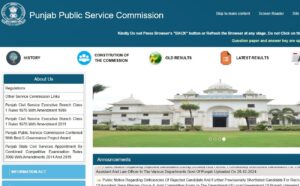 Punjab PCS Selection Process, Prelims, M...
Punjab PCS Selection Process, Prelims, M...
 State Universities of Punjab
State Universities of Punjab
